Site of the Girls' Normal & High School - Boston's First Public Teacher Education & Secondary School for Women
Introduction
Text-to-speech Audio
Three pioneering public schools at this site played a prominent role in establishing girls' education and were closely connected to MIT in the late 19th Century: Girls' Normal School, Girls' High School, and Girls' Latin School. Through 1941, one-third of the women who came to MIT from public schools graduated from one of these schools. Many brought their technical skills into the classroom to educate and lead the next generation of young women. Bessie Tilson Capen (Class of 1878) was the first teacher from the school to study at MIT and became Ellen Swallow Richards' (1873 S.B. Chemistry) lifelong friend and colleague. Clara Preston Ames (S.B. Chemistry) and Carrie Rice Clark (S.B. Chemistry) became the first Girls' High School alumnae to earn MIT degrees in 1882.
The City of Boston closed the Girls' High School in 1974. The building was later demolished. In 1986, the City of Boston built the Thomas O'Day Playground.
Images
Girls' High School, West Newton Street in 1876
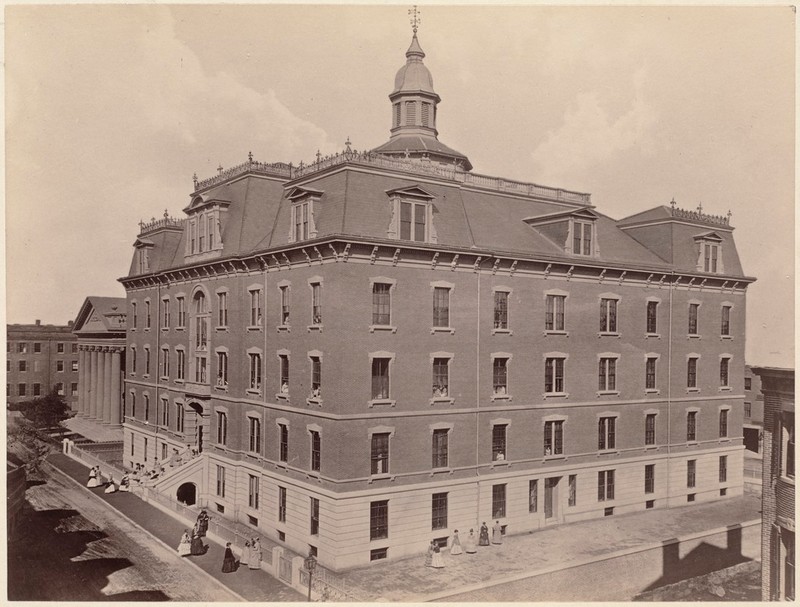
Graduation Portrait of Betsey [Bessie] T. Capen ca 1857. Bridgewater State Normal School
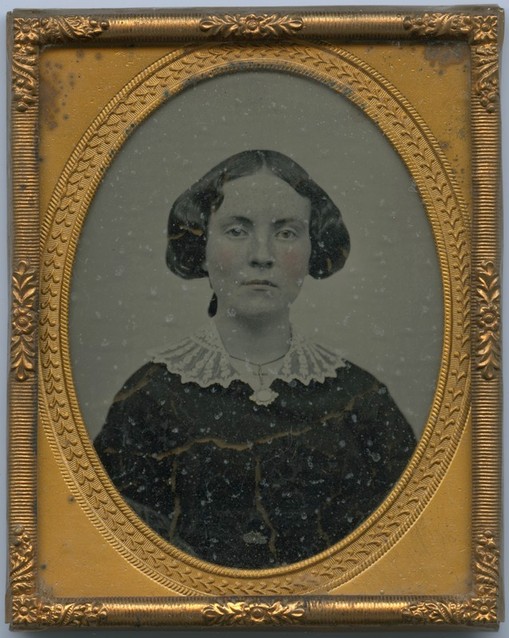
Girls High School - chemical laboratory ca. 1893
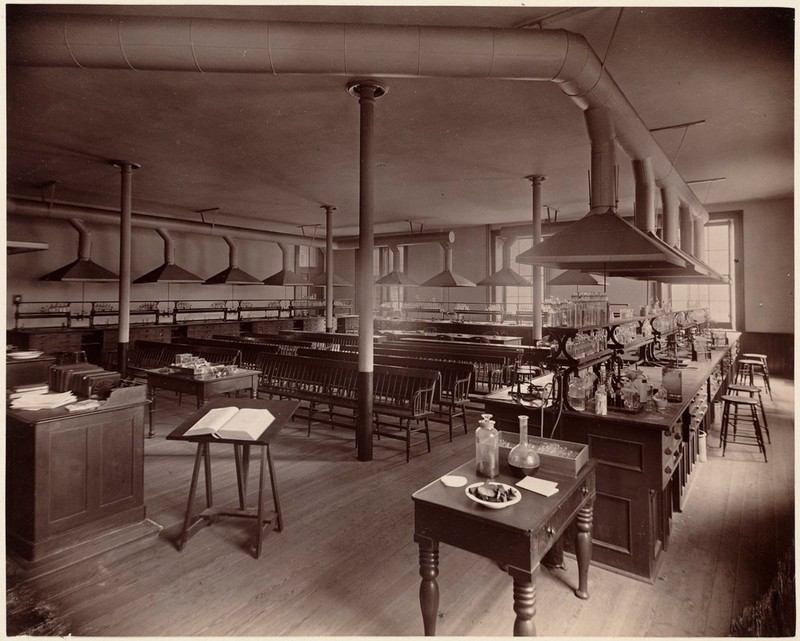
Girls High School - physical laboratory. Third year pupils at work. 1893
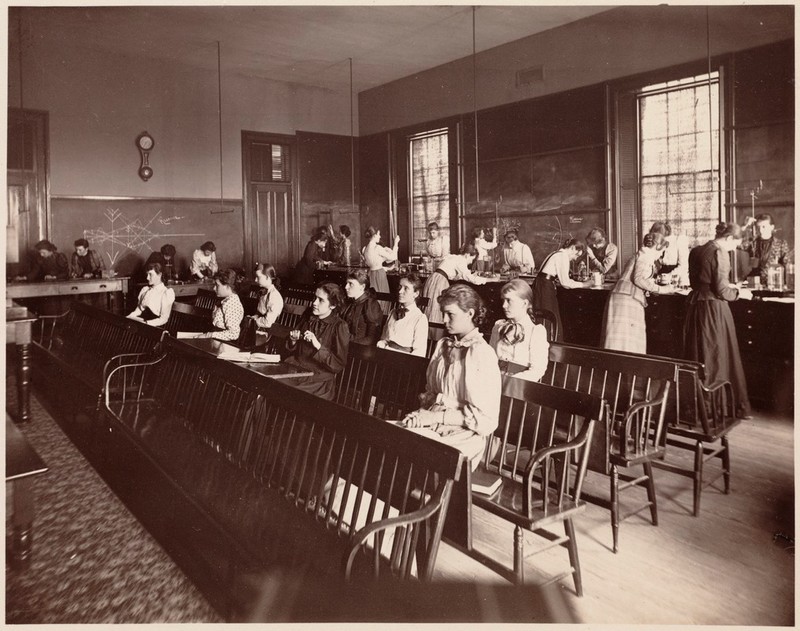
Girls High School, laboratory exercise in zoology, second year class (from Mrs. White's negative) 1893 - Note Lobsters
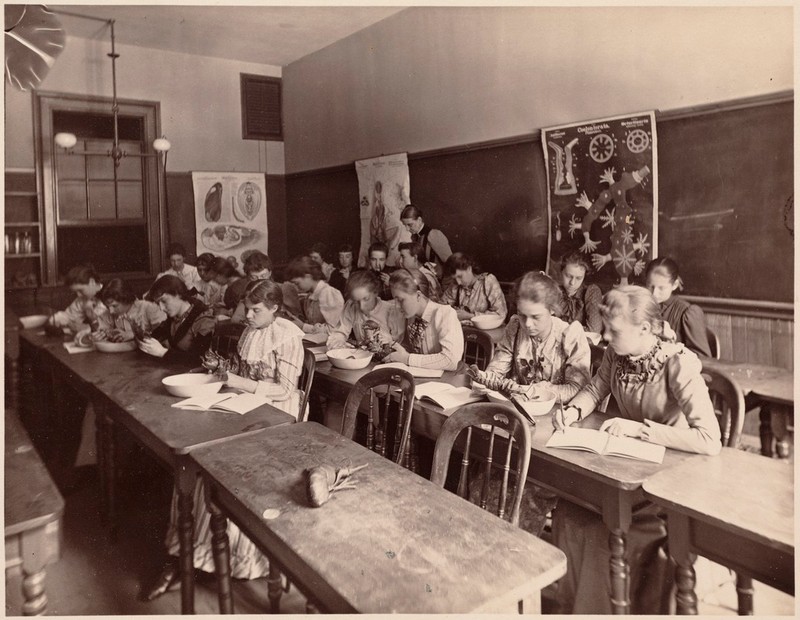
Girls High School - fourth year class
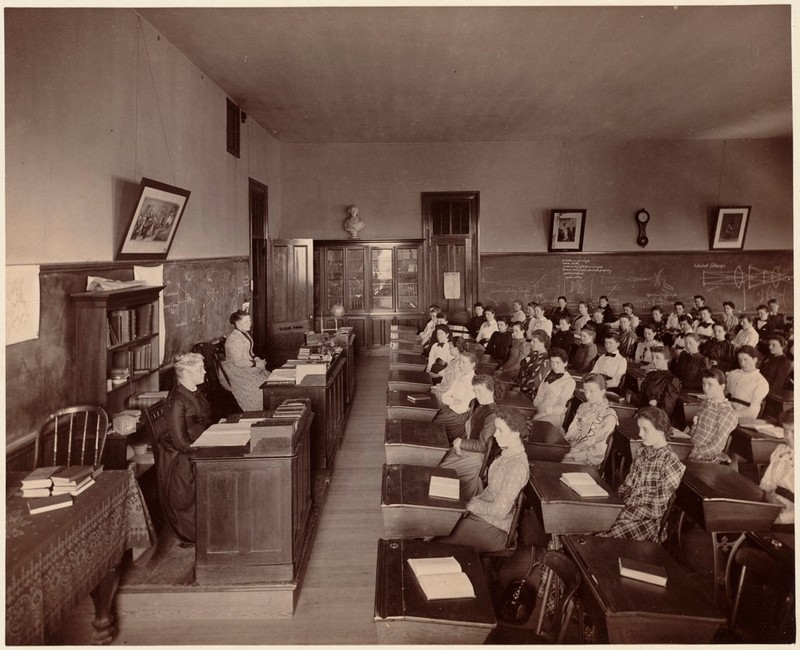
Exterior view of the Girl's High School, West Newton Street, Boston, Mass., ca. 1909
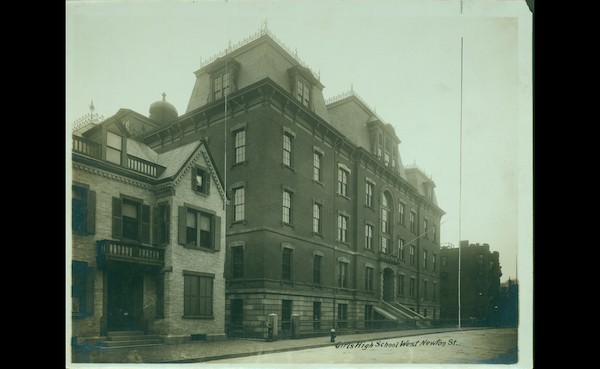
Girl's High School, West Newton Street. October 1920 - After remodel, new roof.
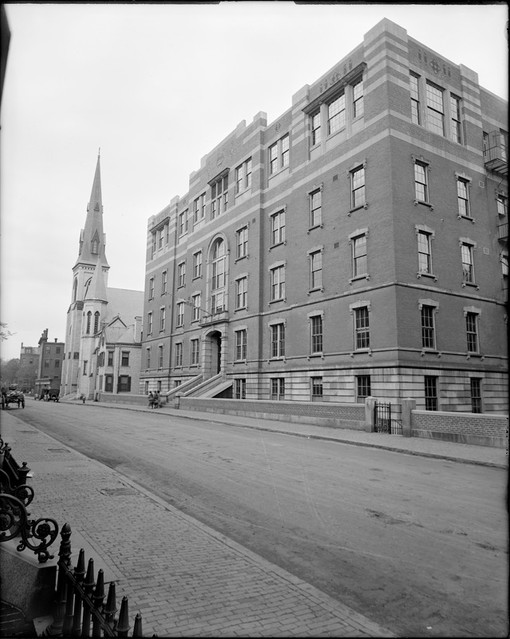
Marie Celeste Turner
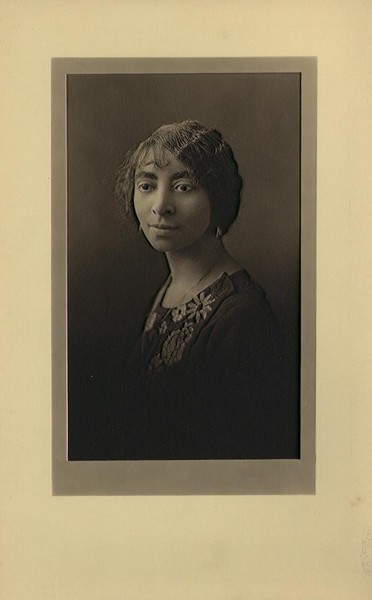
Backstory and Context
Text-to-speech Audio
The Girls Normal School, founded in 1852 to educate women teachers, was the first all-girls school in Boston to offer education beyond grammar school. In 1854 it was renamed “Girls' High and Normal School” to reflect the addition of more advanced subjects. Originally on Mason Street, the school moved to West Newton Street in 1870. Six years later, the Normal School split from the Girls’ High School and moved to a new campus. From 1878 until the early 1900s, the Girls’ Latin School also shared facilities with the Girls’ High School.
Bessie Capen began her schooling at age four. For 77 years, she worked “without even a week’s break, connected with some school as a student, teacher or principal.”10 Bessie applied to MIT to better prepare herself as a Chemistry teacher. “[She] was grudgingly admitted with the statement that a Vassar graduate, Miss [Ellen] Swallow, had been allowed to enter, and, if they had one woman about, they might as well have two.”10 The two became colleagues and friends; sharing an office with Professor John M. Ordway and traveling together over summer vacations.
MIT’s Lowell Free Lectures were open to all and offered Science classes to the community. However, due to financial losses following the Great Fire of 1872, the Lowell Institute suspended its Chemistry classes. Concerned about fewer options for women, MIT Chemistry Professor James M. Craft worked with Girls' School headmaster Samuel Eliot to find alternatives. Eliot offered his school’s newly equipped Chemistry laboratory and the Women’s Education Association agreed to fund instructors and supplies to establish an Advanced Chemistry class. Bessie Capen and Ellen Swallow developed the curriculum and taught the class.
During the 1875-76 academic year Bessie and Ellen each started new projects to improve Science education for women. After seven years at the Girls’ High School, Bessie accepted a position as Professor of Chemistry at the newly chartered Wellesley College. Ellen began work on the Woman’s Laboratory, a space dedicated to the teaching of women. That summer, Ellen and Bessie traveled to Europe to each buy equipment for their new laboratories. In January 1877 Bessie accepted a position as Professor of Chemistry at Smith College. While working at Smith, she also co-founded a college preparatory school for girls where she taught until she died in 1920.
Alumnae from the Girls’ High School and other Boston Public Schools who attended MIT were pioneers and advocates for change. Emerette Ophelia Patch (Class of 1904), a Girls’ High School alumna and teacher, took classes at MIT from 1876 - 1877. She retired in 1914, after nearly a half-century teaching at the school. In 1905, Girls’ High alumna Marie Celeste Turner (Class of 1909) became the first Black woman to attend MIT. Marie taught in the Boston Public Schools and retired in 1960. Girls’ High English teacher Mary E. Wynne (Class of 1897), a Normal School alumna, attended MIT in the 1890s. Active in the women’s suffrage movement, Mary traveled to England to meet with Emmeline Pankhurst; and wrote articles for the Boston Globe discussing women’s suffrage, minimum wage, and free speech in the classroom. Early MIT Alumnae were among the first women to attend college-level classes in technical fields; as educators, they encouraged and inspired young women.
Cite This Entry
Smith, Coleen. "Site of the Girls' Normal & High School - Boston's First Public Teacher Education & Secondary School for Women ." Clio: Your Guide to History. June 23, 2023. Accessed April 11, 2025. https://theclio.com/entry/153681
Sources
- Bever, Marilynn. The Women of M.I.T., 1871-1941 : Who They Were, What They Achieved. MIT Libraries | DSpace@MIT, 1976, http://hdl.handle.net/1721.1/33804. Accessed 25 Feb. 2022.
- Cheney, Ednah Dow. The Women of Boston, from The memorial history of Boston: including Suffolk County, Massachusetts. 1630-1880. Ed. by Justin Winsor. Boston: Ticknor and Company. Volume 4, pp. 344-345. https://hdl.handle.net/2027/hvd.hwit6v?urlappend=%3Bseq=359%3Bownerid=27021597766862750-365. Accessed 14 Oct. 2022.
- Hunt, Caroline Louisa, 1865-1927. The Life of Ellen H. Richards. Boston: Whitcomb & Barrows, 1912, https://hdl.handle.net/2027/uc2.ark:/13960/t3513ww21. Accessed 11 Mar. 2022.
- M.I.T. Women's Association. Registration Committee. (1916). Technology women. Cambridge, Mass.: Massachusetts Institute of Technology. https://hdl.handle.net/2027/hvd.hn59ep. Accessed 15 Oct. 2022.
- “Obituary: Marie Celeste Turner.” Boston Globe, 1 Mar. 1976, p. 31. Newspapers.com, https://www.newspapers.com/paper/the-boston-globe/9077/. Accessed 13 Oct. 2022.
- “Personal: Miss Bessie T. Capen, Formerly of Stoughton Is Traveling to Europe in the Interest of Wellesley College.” Boston Evening Transcript, 5 Aug. 1876, p. 5. Accessed 6 Oct. 2022.
- Register of Former Students, Bulletin of the Massachusetts Institute of Technology, Massachusetts Institute of Technology, 1912. https://books.google.com/books?id=5mc9AAAAYAAJ. Accessed 15 Oct. 2022.
- "Retirements: Emerette O. Patch.” Boston Globe, 19 May 1914, p. 10. Newspapers.com, https://www.newspapers.com/image/430637816/. Accessed 13 Oct. 2022.
- "Returns Sanguine of Votes for Women: Miss Mary E. Wynne Home from Trip Abroad.” The Boston Globe, 3 Dec. 1912, p. 9. Newspapers.com, https://www.newspapers.com/image/430646937/. Accessed 13 Oct. 2022.
- Reynolds, Mary L. B. “Miss Bessie T. Capen; educator.” Stoughton Sentinel 3-4 August 1933: 2. Microform. History of Women (1976): Reel 968, M5.
- White, Olive. Our History - Girls’ High School of Boston Alumnae. Girls’ High School of Boston Alumnae, https://ghsalumnaeboston.org/history. Accessed 14 Mar. 2022.
- Woman's Education Association (Boston, Mass.) records, Massachusetts Historical Society. Box 2, Folder 1, General meeting records, 1871–1929. https://www.masshist.org/collection-guides/view/fa0393. Accessed 11 Oct. 2022.
- Woods, Lucy. A History of the Girls’ High School of Boston, 1852-1902 . Boston. Printed at the Riverside Press, 1904, https://archive.org/details/historyofgirlshi00wood/page/n9/mode/2up. Accessed 14 Mar. 2022.
1. Folsom, A. H. (Augustine H.). Girls High School, Newton St.. 1876. https://ark.digitalcommonwealth.org/ark:/50959/2227n287x. Accessed 21 Oct 2022.
2. Betsey T. Capen. [ca. 1857]. https://ark.digitalcommonwealth.org/ark:/50959/0p097v43s. Accessed 21 Oct 2022.
3. Folsom, A. (1893). Girls High School - chemical laboratory. https://ark.digitalcommonwealth.org/ark:/50959/cf95jq98c. Accessed 21 Oct 2022.
4. Folsom, A. H. (Augustine H.), -1926. Girls High School - physical laboratory. Third year pupils at work. 1893. <https://ark.digitalcommonwealth.org/ark:/50959/2227n259r>. Accessed 21 Oct 2022.
5. Folsom, A. H. (Augustine H.), -1926. Girls High School, laboratory exercise in zoology, second year class (from Mrs. White's negative). <https://ark.digitalcommonwealth.org/ark:/50959/2227n255n>. Accessed 21 Oct 2022.
6. Folsom, A. H. (Augustine H.), -1926. Girls High School - fourth year class. 1893. <https://ark.digitalcommonwealth.org/ark:/50959/2227n251j>. Accessed 21 Oct 2022.
7. Boston Post Card Co.. Exterior view of the Girl's High School, West Newton Street, Boston, Mass., 1909. https://www.historicnewengland.org/explore/collections-access/gusn/196585/. Accessed 21 Oct 2022.
8. Abdalian, Leon H. Girl's High School, West Newton Street. October 1920. https://ark.digitalcommonwealth.org/ark:/50959/gt54kz041. Accessed 21 Oct. 2022.
9. Courtesy of Turner Family Collection, Howard Gotlieb Archival Research Center at Boston University. From https://www.blackhistory.mit.edu/archive/marie-c-turner-09. Accessed 23 Oct. 2022.

